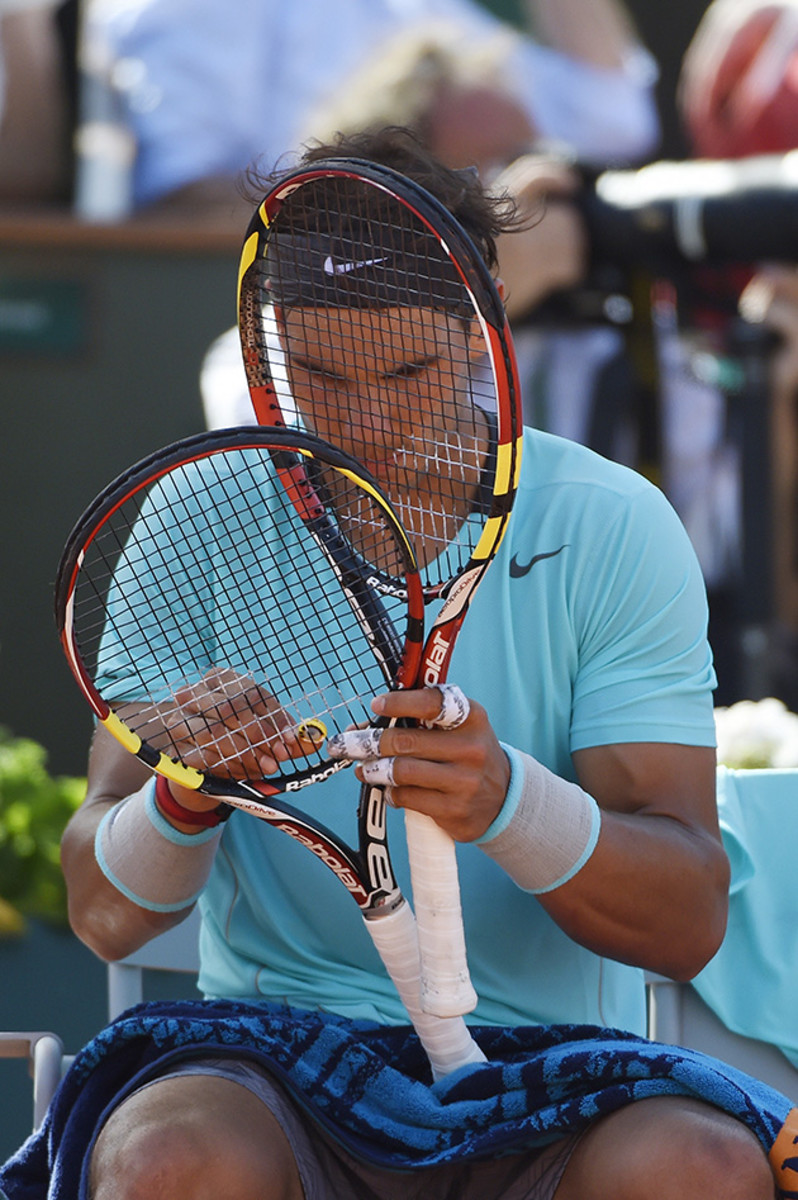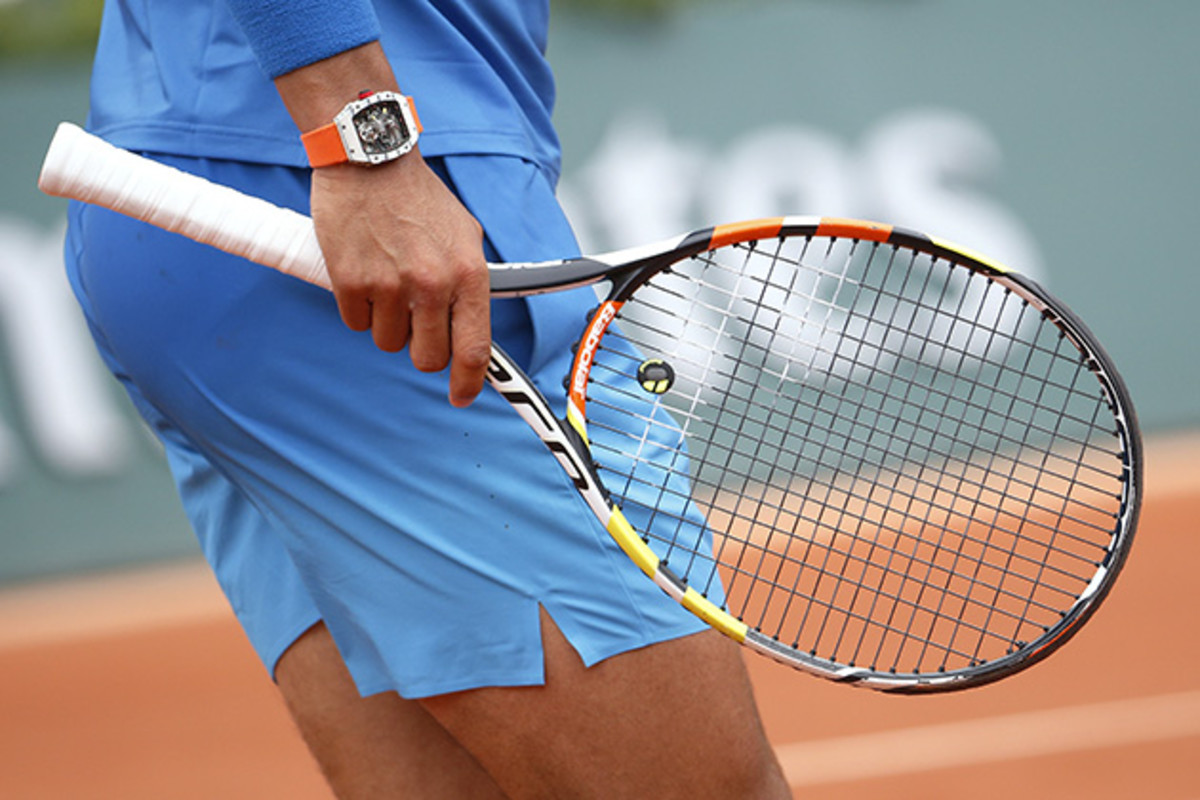A behind the scenes look at the French Open racket stringers

While Rafael Nadal plays at Roland Garros, a team of stringers remains constantly busy, stringing new rackets for him behind the scenes. And Nadal isn’t the only one.
Last year during the French Open alone, stringers placed 33 miles worth of natural gut and monofilament string in the rackets of players, a total of 4,467 rackets strung during the Paris event.
“You can have some players give you a racket in the afternoon and want it for the next day, some want it in the evening, some want it strung the next morning just before a match,” says Sylvain Triquigneaux, the organizer of the stringing service at the French Open. “It depends on the habit [of the players].”

Babolat runs the French Open operation and not just for Babolat-sponsored athletes, but for the entire four-week event that includes qualifying rounds before the main two-week draw and the junior event that runs the final week of the main tournament. Triquigneaux says the varying events offers a trifecta of peak times, including the opening when players are arriving for qualifying, the start of the junior event and, the most intense, the start of the main draw.
With 128 players arriving on site for each bracket for men, women and doubles, Triquigneaux says the days start at 7:30 a.m. and run until midnight. “We have peak moments on the top days, but on the other days we sometimes have time to watch a match,” he says, “but that is not so often.”
Amelie Mauresmo left lasting impression on Andy Murray
Located close to the museum near courts two and three in about 2,700 square feet of space, 19 stringers from 11 countries converge on 17 different stringing machines to offer stringing and customization services that include grip changes, adjustments to rackets and other tweaks.
While the players themselves may venture into the space before the grounds open to the public, Triquigneaux says typically see family members, coaches and trainers bring rackets once spectators flow through Roland Garros.
“Each player has their own habits,” Triquigneaux says. “They are all different, but we don’t have difficult requests.”
Players typically play matches every two days, so Triquigneaux says a training day may bring a request of four fresh rackets, while on a match day players in the main draw typically ask for between four and 10 newly strung rackets. Usually requesting the same stringer for the entire tournament, every player approaches match day a bit different.
Nadal, for example, always strings at 55 pounds. All rackets. Other players may have multiple tensions in their bag for “different temperature, humidity or different situations in the game,” Triquigneaux says. “They may decide to change rackets in the match.”

Some players want fresh rackets during the match. Nadal, for example, requests a “match in course” service, updating his rackets in individual rush jobs while he plays. “We know Nadal, each time he is going to change his racket on the court he is going to ask to restring it,” Triquigneaux says. “When we have the schedule of the day, whatever the player, he is always agreeing to do the same thing.”
While a novice stringer can easily take up to two hours to string a racket, even accomplished stringers can take 30 minutes, Triquigneaux says he has the most skilled stringers in the world, typically taking 15 to 20 minutes on a racket. But when a match in course situation arises, the pros hustle even more, condensing the process to 12 or 13 minutes.
Where does Roland Garros get its name? Inside the stadium’s history
As playing patterns evolve, stringing requests trend too. Players are requesting more intricate combinations of strings, mixing a natural gut for a main or cross string and a monofilament for the other as a common request. “Once again, it really depends on the player, but when they are doing this kind of configuration the natural gut is for power and monofilament for durability and spin,” Triquigneaux says.
The average tension requested by players in 2015 was 53 pounds, down slightly over the last 10 or 15 years from about 60 pounds, Triquigneaux says. Last year’s tournament saw the lowest tension behest come from Mikhail Kukushkin (21 pounds) and Dustin Brown request the highest tension at 70.5 pounds.
Every other one of the 4,400-plus rackets strung fell in that range, all done in mere minutes on the grounds of Roland Garros.
Tim Newcomb covers sports aesthetics—stadiums to sneakers—and training for Sports Illustrated. Follow him on Twitter at @tdnewcomb.
